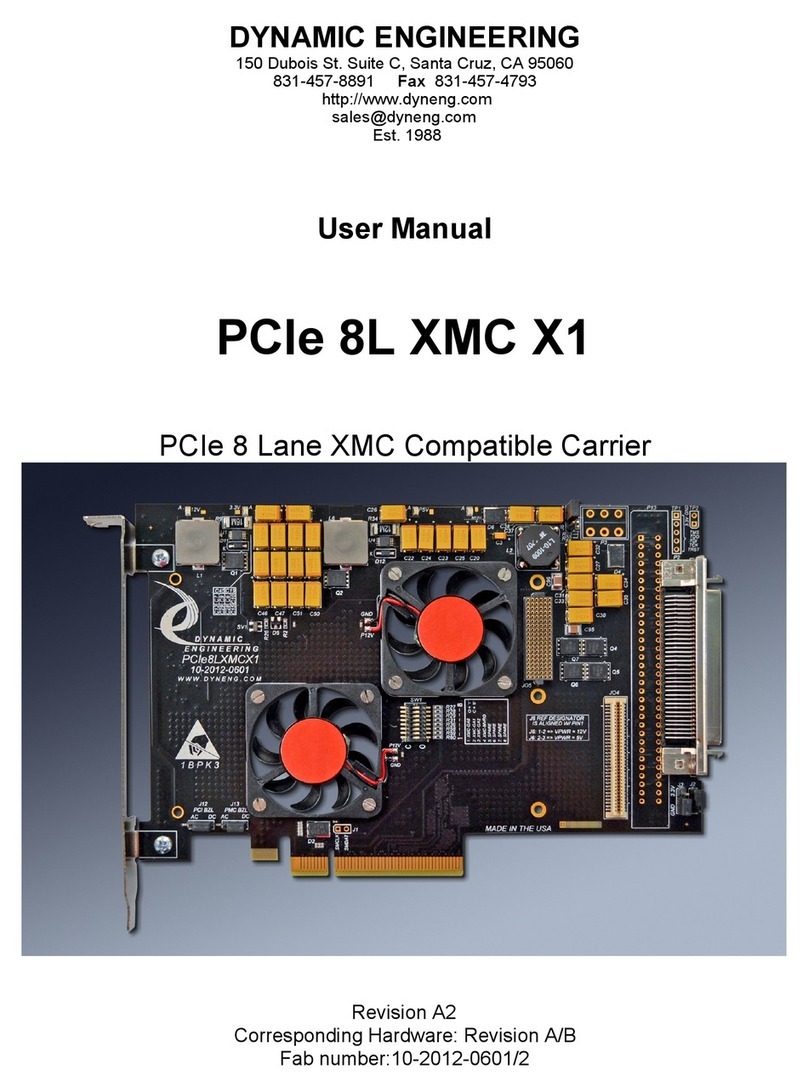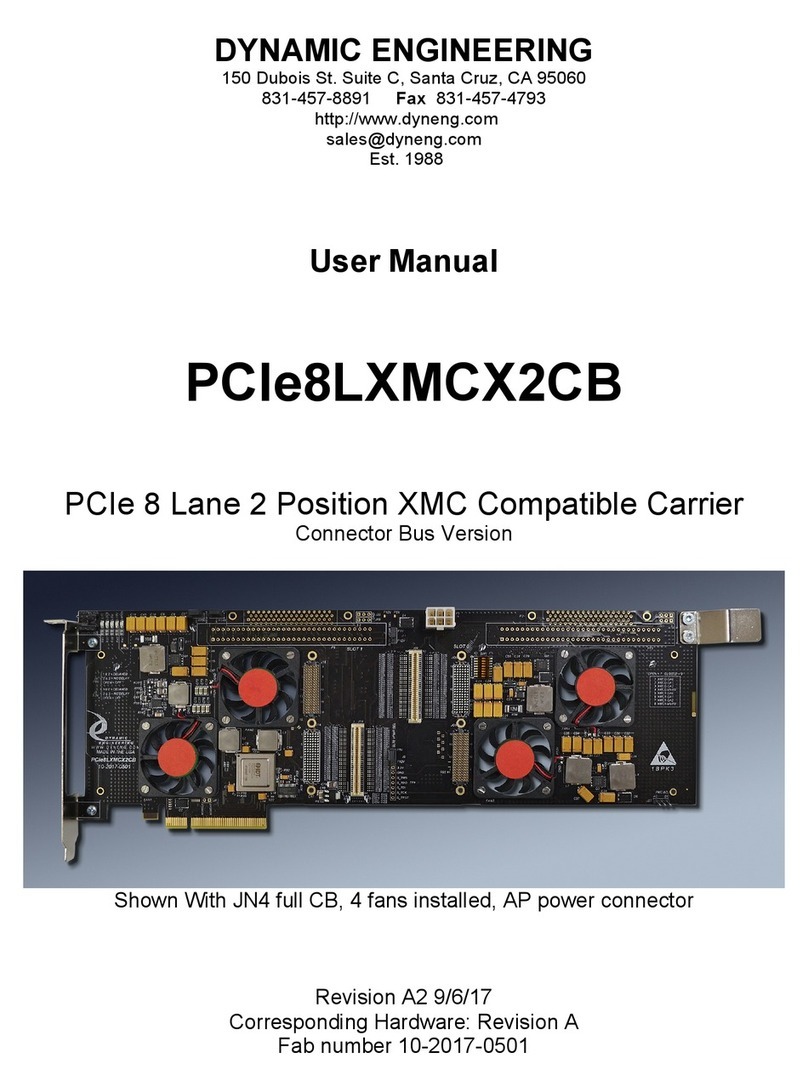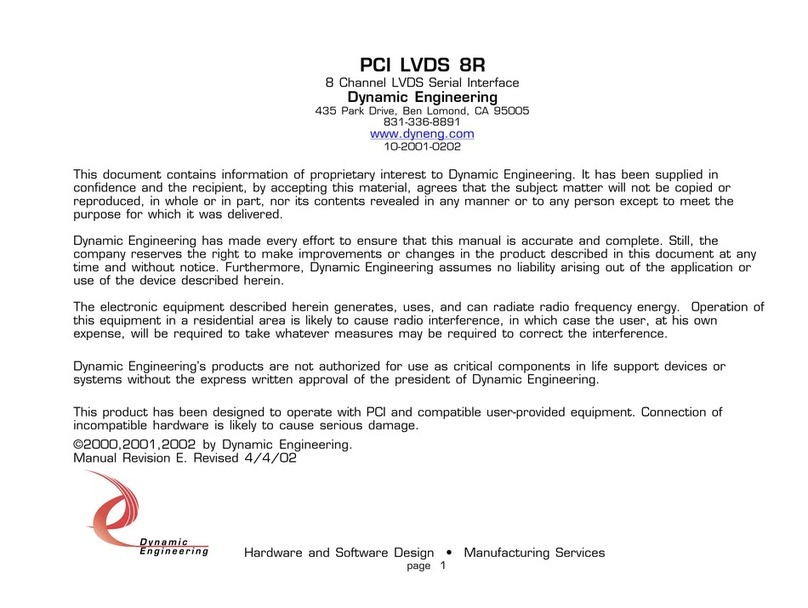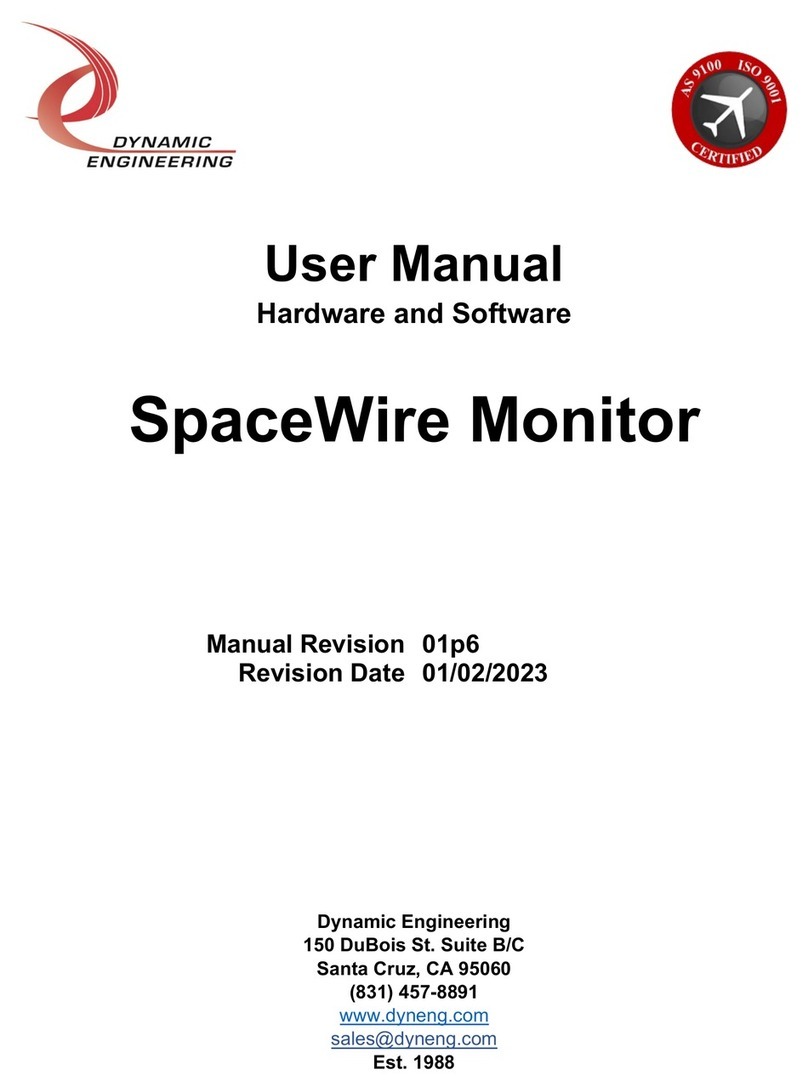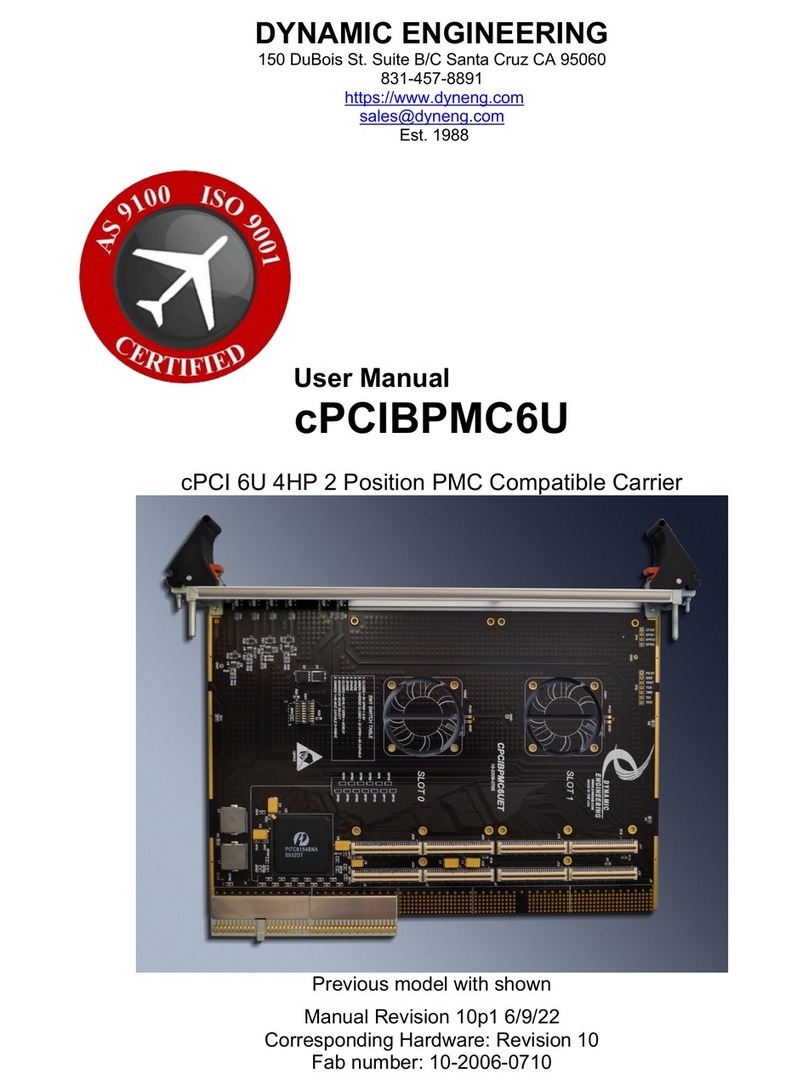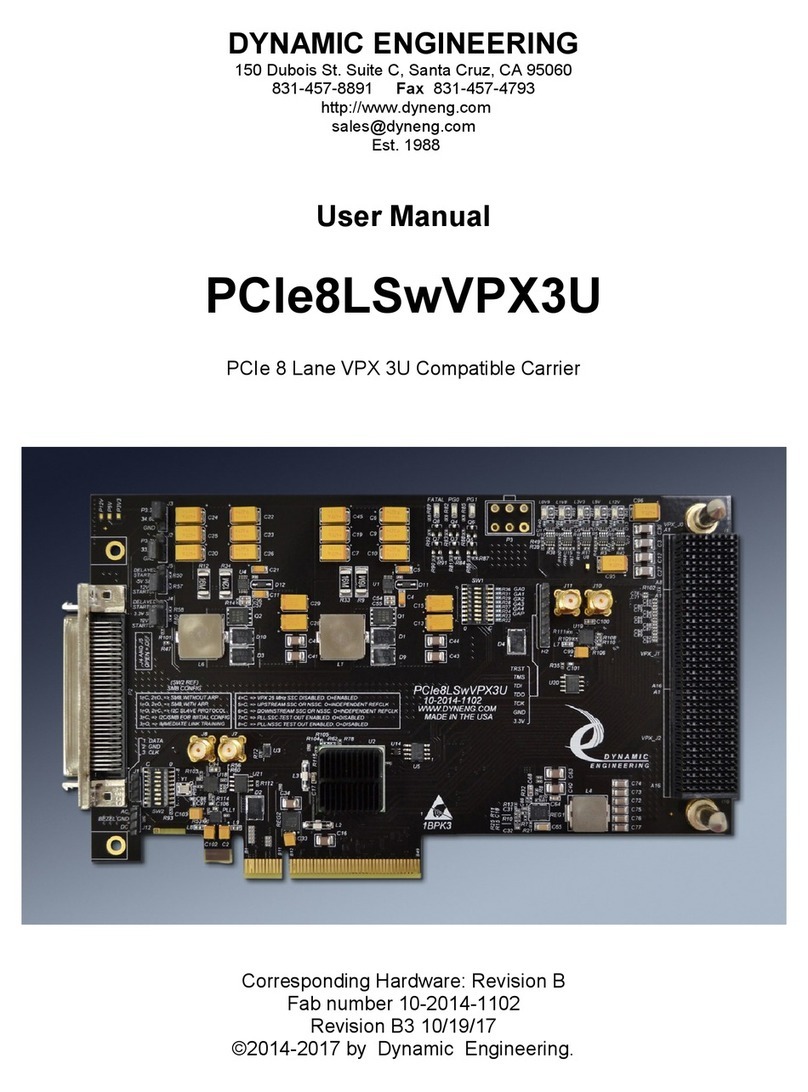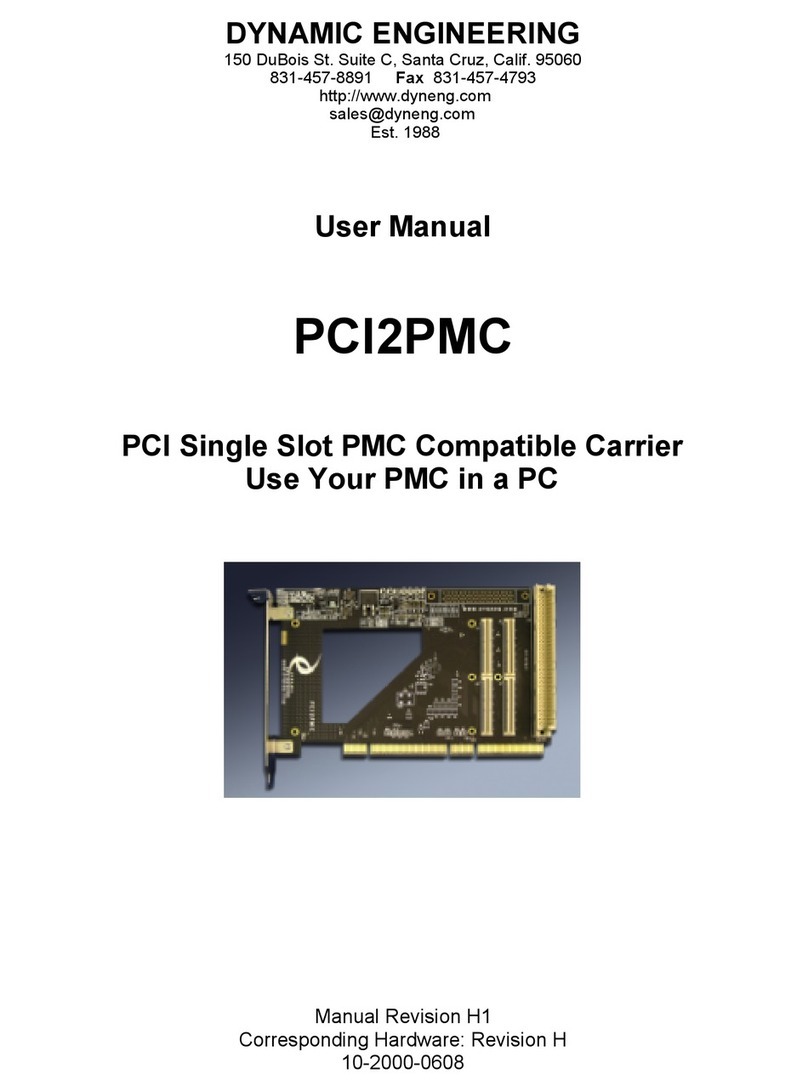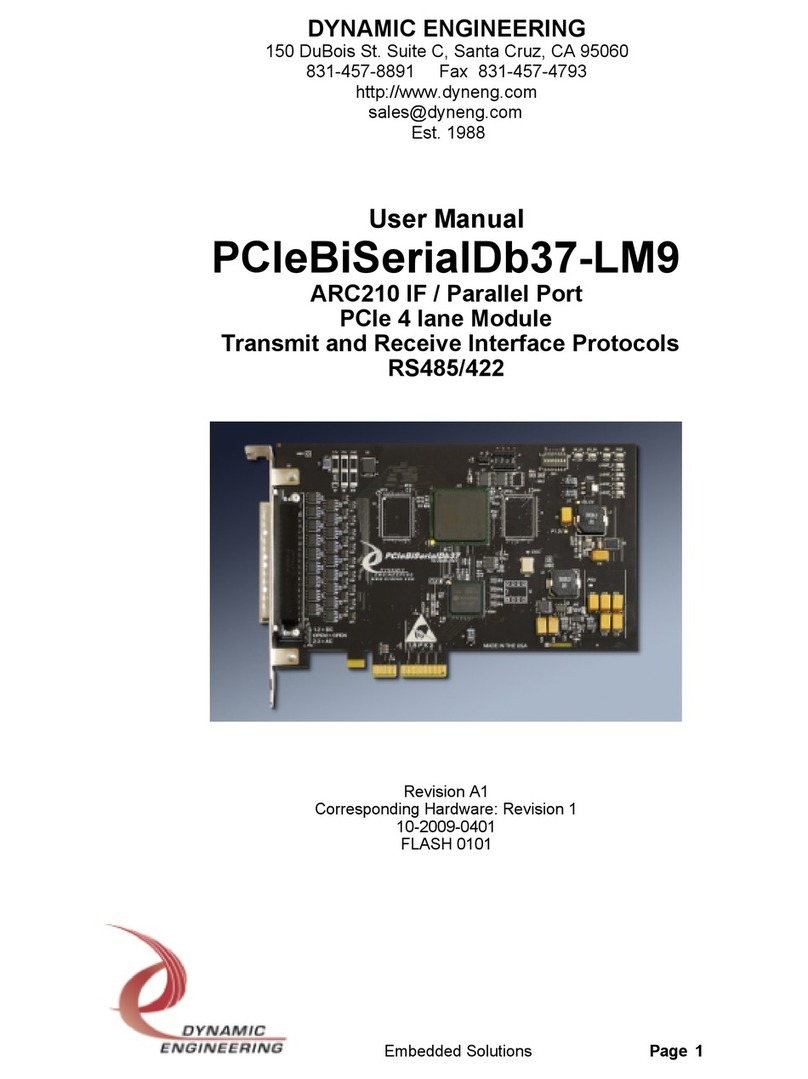
Embedded Solutions Page 10 of 57
The port 3 connector implementation varies depending on the format. The PMC version
can be configured with 3 MDM connectors, and have 1 channel on Pn4 or all 4 channels
routed to Pn4. In all cases, high speed, differential routing with controlled impedance
and matched lengths are used for the SpaceWire signaling. It is recommended to use a
SpaceWire compatible cable to interconnect your hardware. Dynamic Engineering has
several standard lengths of cable and offers custom lengths as well.
http://www.dyneng.com/SpaceWireCable.html
If you can use the SpaceWire hardware set but need an alternate protocol please
contact Dynamic Engineering. We will redesign the state machines and create a
custom interface protocol. See our web page for current protocols offered. Please
contact Dynamic Engineering with your custom application.
The SpaceWire protocol implemented provides Low Voltage Differential Signaling
(LVDS) data inputs and outputs. The transmit data rate is selected by a combination of
the programmed output frequencies of the PLL and the divisor values in the channel
control registers. The PLL is programmed via software over a serial I2C interface.
Transmit data rates are selectable from 2 Mbps to 200 Mbps. The receiver will
automatically adjust to the data rate seen.
The SpaceWire specification requires that the transmit frequency be 10 Mbps during the
link connection process. In order to accommodate this, the PLL frequency should be at
least close to a multiple of 10 MHz. Once the link protocol has established a
connection, the transmit speed will convert to the desired transmit rate specified in the
channel control registers.
Four independent SpaceWire channels are provided per card. Each SpaceWire
channel has two LVDS signal pairs for input and two LVDS signal pairs for output. The
electrical interface for SpaceWire is as specified in document ECSS-E-50-12C,
published by the European Cooperation for Space Standardization dated 31 July 2008.
Connections for the first three SpaceWire channels on the card are with MDM style
connectors as required by the specification. The fourth PMC channel is only available
on the PN4 connector. Any or all of the four channels can be routed to the PN4
connector (PMC only) rather than the MDM connectors by selecting which 0W resistors
are installed on the board.
